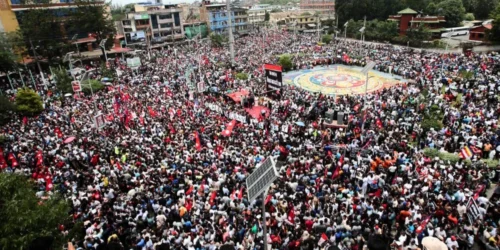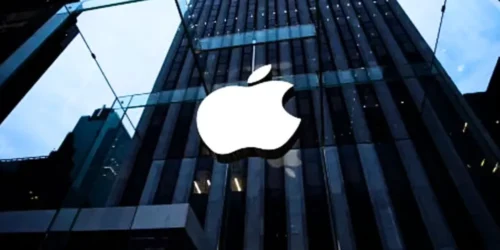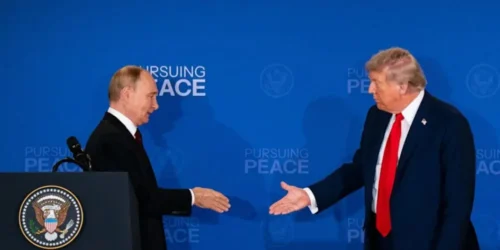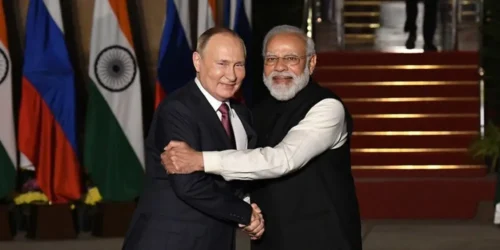For generations, the boardroom and the situation room existed in separate universes. The CEO worried about profit margins, supply chains, and market share; the diplomat and the general worried about alliances, borders, and troop movements. The map on the wall of the corporate office was an economic one, colored by market size and consumer demographics. The map in the foreign ministry was a political one, shaded by spheres of influence and historical grievances. They rarely overlapped.
That world is gone. The wall between those two universes has crumbled into dust. Today, a border skirmish in a distant mountain pass can ground a fleet of cargo planes. A tweet from a world leader can vaporize billions in stock value. A new trade tariff, born of nationalistic pride, can force a hundred-year-old company to re-engineer its global supply chain completely. The maps have merged.
We refer to this new, chaotic landscape as “geopolitical risk.” However, the term itself feels too sterile and academic. It fails to capture the gut-punch reality of a factory suddenly situated in a war zone or a critical shipment of microchips being held hostage by a trade dispute. This is not a theoretical risk to be modeled in a spreadsheet. It is a series of unseen, powerful currents flowing just beneath the surface of the global economy, capable of dragging even the most powerful multinational corporation onto the rocks.
This is a case study of those currents. We will not simply define geopolitical risk; we will dissect it. We will explore how the predictable, bipolar world of the Cold War has shattered into a dangerously unpredictable, multi-polar free-for-all. We will analyze the new weapons of this conflict—from semiconductors to shipping lanes—and examine, through visceral, real-world examples, how companies that failed to navigate these waters capsized.
But this is not a story of doom. It is a manual for survival. In the final act, we will lay out a practical framework for building a geopolitically resilient organization. This is about transforming risk management from a reactive, box-ticking exercise into a proactive, intelligence-driven corporate muscle. It’s about learning to read the new map, anticipating the currents, and building an enterprise that not only survives the storm but also knows how to harness its energy. The era of blissful ignorance is over. The age of the corporate cartographer has begun.
Redrawing the Map – The New Face of Global Disorder
To understand the risks we face today, we must first appreciate how fundamentally the world has changed. The muscle memory of many senior executives was formed during the late 20th century, a period of relative geopolitical calm that we now recognize as a historical anomaly.
The End of the “End of History”
The fall of the Berlin Wall in 1989 and the subsequent collapse of the Soviet Union ushered in a brief, heady era of optimism. Political scientist Francis Fukuyama famously coined the phrase “The End of History,” arguing that humanity had reached the endpoint of its ideological evolution with the universal triumph of Western liberal democracy. It was believed that the world was becoming flatter. Globalization was an unstoppable, benevolent force. The logic of the market would smooth over old rivalries. The idea was that nations that trade together and are deeply enmeshed in each other’s economies would have too much to lose to ever go to war. The economic map would dominate the political one.
For about two decades, this thesis seemed to hold. China joined the World Trade Organization and became the world’s factory. The European Union expanded, erasing old borders and creating a vast single market. Global supply chains, optimized for maximum efficiency under the “just-in-time” philosophy, snaked across the planet with breathtaking complexity and little thought for political friction. A company could design a product in California, source components from Taiwan and South Korea, assemble it in China, write the software in India, and sell it in Germany, all with the seamless grace of a choreographed dance. The system worked, and it created unprecedented wealth.
But history, it turns out, was just taking a breath. The undercurrents of nationalism, historical grievance, and ideological competition never disappeared; the tide of globalization merely submerged them. Now that the tide is receding, the old, jagged rocks are being re-exposed.
From a Bipolar World to a Multi-Polar Free-for-All
The Cold War, despite its existential terror, was a remarkably stable system. The world was divided into two predictable blocs, led by the United States and the Soviet Union. The rules, while unwritten, were broadly understood. If you were a global company, you knew which side of the Iron Curtain you operated on. The map was stark and clear.
Today’s world is infinitely more complex and unpredictable. We live in a multi-polar, or perhaps more accurately, a “no-polar” world.
- The United States, while still a formidable power, no longer enjoys the unrivaled global dominance it had in the 1990s.
- China has risen as a peer competitor, a true economic, technological, and military heavyweight with its vision for the global order.
- Russia, though economically weaker, has demonstrated a willingness to use its military and energy resources to disrupt the status quo violently.
- Regional powers, such as India, Turkey, Saudi Arabia, and Brazil, are increasingly asserting their interests, often playing the great powers against each other and refusing to be drawn into simple alliances.
This diffusion of power creates a far more volatile environment. Alliances are fluid. Conflicts can erupt with little warning. There is no single “global policeman” to enforce the rules because there is no longer a consensus on what the rules are. For businesses, this means the stable ground upon which they built their global empires is shifting beneath their feet. The assumption of free-flowing trade, open markets, and predictable international relations—the very foundation of the last 30 years of corporate strategy—can no longer be taken for granted. The map is being actively, and sometimes violently, redrawn, and every business is caught in the crossfire.
The Four Horsemen of Modern Geopolitical Risk
Geopolitical risk is not a single, monolithic threat. It manifests in various forms, each with its own unique set of challenges. To navigate this landscape, we must first identify the primary vectors of risk—the “Four Horsemen” of our modern, chaotic era.
The Return of Great Power Competition: State-on-State Conflict
The most visceral and destructive form of geopolitical risk is the return of direct conflict between states or their proxies. The era when economic interdependence was thought to make war “unthinkable” between major powers is over. The Russian invasion of Ukraine in February 2022 was a brutal wake-up call. It demonstrated that a major power was willing to sacrifice immense economic benefits and suffer global isolation to pursue its revanchist, territorial ambitions.
For businesses, the implications are profound and immediate.
- Physical Asset Destruction: Factories, offices, and infrastructure can be destroyed in a matter of hours.
- Employee Safety: The primary duty of any company—the safety of its people—becomes a logistical and moral nightmare.
- Market Annihilation: An entire national market, one that may have been a key source of revenue, can simply vanish.
- Supply Chain Catastrophe: The conflict doesn’t just affect the countries involved; it sends shockwaves through global supply chains, disrupting the flow of everything from energy and food to critical raw materials.
The looming shadow in this category is, of course, a potential conflict over Taiwan. A crisis in the Taiwan Strait would make the fallout from Ukraine appear minor by comparison. It would pit the world’s two largest economies against each other and sever the single most critical artery of the global technology ecosystem: the supply of advanced semiconductors. This is no longer a fringe scenario; it is a core contingency that every global technology, automotive, and manufacturing company must now actively plan for.
The Cracks Within: Internal Instability and Political Upheaval
While we often focus on conflicts between nations, the risk of instability within a nation can be just as disruptive. A country that appears stable one day can be wracked by protests, coups, or civil unrest the next. The Arab Spring of the early 2010s is a classic example, where a wave of popular uprisings toppled long-standing regimes and plunged several countries into chaos, catching countless international firms off guard.
This type of risk is driven by a potent combination of factors, including economic inequality, government corruption, youth unemployment, ethnic tensions, and the amplifying effect of social media. It can manifest in several ways:
- Sudden Regime Change: A new government may nationalize foreign assets, tear up existing contracts, or implement radically different economic policies.
- Widespread Protests and strikes can paralyze transportation networks, shut down ports, and make it impossible for employees to reach their workplaces, effectively grinding business operations to a halt.
- Erosion of the Rule of Law: In a failing state, property rights are often disregarded, making foreign companies vulnerable targets for extortion or expropriation.
Companies must now become adept at political risk analysis, monitoring the social and economic health of the countries in which they operate. They can no longer rely on a top-down assessment from the capital city; they need on-the-ground intelligence to understand popular sentiment and the true fragility of the political system.
The Weaponization of Everything: The New Economic Statecraft
Perhaps the most defining feature of 21st-century geopolitical risk is the blurring of the line between economics and security. In this new era, nearly every aspect of the global economy can be — and has been —turned into a weapon. This is the new “economic statecraft.”
- Trade and Tariffs: The U.S.-China trade war, which began in 2018, demonstrated how quickly tariffs can be deployed not only for economic protection but also as a tool of geopolitical coercion. Companies were forced into a desperate scramble to reconfigure supply chains that had taken decades to build.
- Technology: The battle for technological supremacy, particularly in areas like 5G, artificial intelligence, and semiconductors, is the central front of the new Cold War. Governments are using export controls, sanctions, and investment blacklists to choke off their rivals’ access to critical technology. Companies like Huawei found themselves at the epicenter of this struggle, effectively barred from Western markets.
- Finance and Currency: The global financial system, long seen as a neutral utility, is now an active battleground. The unprecedented sanctions imposed on Russia’s central bank after the Ukraine invasion demonstrated the West’s ability to weaponize access to the U.S. dollar and the SWIFT messaging system, effectively isolating a G20 economy from global finance.
- Data and Information: Nations are increasingly enacting “data localization” laws, requiring companies to store citizen data within the country’s borders. This fractures the concept of a single, global internet, creating immense compliance costs and operational headaches for tech companies.
For businesses, this means that every decision—where to source components, where to house data centers, which markets to enter—is now a geopolitical decision with potential security implications.
The New Frontiers: Resource Nationalism and Climate Change
The final two horsemen are intertwined and growing in power. The global transition to clean energy is creating a voracious new demand for critical minerals like lithium, cobalt, nickel, and rare earth elements. The geographic concentration of these resources—with China dominating rare earth processing and the Democratic Republic of Congo holding the majority of the world’s cobalt—is setting the stage for a new era of “resource nationalism.”
Governments that control these chokepoints can use their leverage to extract concessions, favor domestic companies, or restrict exports to rival nations. A car company planning its multi-billion-dollar pivot to electric vehicles is now critically dependent on the political stability and trade policies of just a handful of countries.
Layered on top of this is the accelerating reality of climate change itself as a geopolitical risk multiplier.
- Physical Risk: Extreme weather events—such as floods, droughts, and wildfires—are increasingly disrupting agriculture, damaging infrastructure, and displacing populations.
- Geopolitical Flashpoints: Drought and water scarcity can exacerbate existing tensions between nations that share river systems (e.g., the Nile, the Mekong). The opening of new shipping lanes in the melting Arctic is already creating a new arena for competition between Russia, China, and NATO powers.
- Transition Risk: The global shift away from fossil fuels will create winners and losers. Nations whose economies are heavily dependent on oil and gas exports could face significant instability as global demand declines, creating a new set of failing states.
These four horsemen represent a fundamental rewiring of global risk. The clear economic map of the 1990s has been replaced by a chaotic, four-dimensional chart where political, military, economic, and environmental risks are all dangerously interconnected.
Case Studies from the Eye of the Storm
Theory is one thing; reality is another. To truly understand the impact of these risks, we must examine how they have played out in real companies that have been caught in the geopolitical crosscurrents.
The Corporate Exodus from Russia – A Moral and Financial Quagmire
When Russian tanks crossed into Ukraine in February 2022, they didn’t just shatter the peace in Europe; they shattered the strategic plans of hundreds of global corporations. For 30 years, Russia has been an attractive, if sometimes challenging, growth market. Companies like McDonald’s, IKEA, Renault, and energy giants such as BP and Shell had invested billions, building factories, retail networks, and extensive operational footprints.
The invasion created an impossible dilemma —a perfect storm of operational, financial, and reputational risks.
- The Sanctions Shockwave: The initial challenge was simply navigating the unprecedented wave of Western sanctions. These were not targeted measures; they were a financial siege designed to cripple the Russian economy. Legal and compliance teams worked around the clock just to understand what was and was not permissible. Could they pay their local staff? Could they import necessary supplies? The SWIFT cutoff made even basic transactions a nightmare.
- The Reputational Crucible: As images of the devastation in Ukraine filled social media feeds, a new, more powerful force emerged: public outrage. A Yale School of Management team began publishing a “naughty or nice” list, tracking which companies were withdrawing from Russia and which were remaining. The hashtag #Boycott[Brand] trended daily. Staying in Russia was no longer just a business decision; it became a statement of values. Companies that hesitated were accused of prioritizing “profits over people” and suffered immense brand damage.
- The Agony of Exit: The decision to leave was just the beginning of the pain. How do you unwind 30 years of investment in a hostile environment? You can’t just turn off the lights and walk away.
The Lesson: The Russia case study proves that in today’s world, geopolitical risk is also a moral risk. A company’s social license to operate is now a global phenomenon. The decision-making framework cannot be purely financial. It must integrate ethical considerations and reputational blowback, which, as many have learned, can have a financial cost that dwarfs any potential profits from staying put. It also brutally exposed the folly of over-concentration in politically volatile markets.
The U.S.-China Tech War – Caught in the Crossfire
If the Russia crisis was an explosion, the U.S.-China tech rivalry is a slow-motion, tectonic decoupling. This is a “quiet war” fought not with tanks but with export controls, entity lists, and industrial policy. And at its heart is the semiconductor.
Advanced microchips are the crude oil of the 21st century. They power everything from iPhones and data centers to advanced weaponry. For decades, this industry operated on a model of global collaboration. U.S. firms like Apple and Nvidia designed the chips, while the Dutch company ASML built the unique, indispensable lithography machines needed to print them. The Taiwanese giant TSMC then manufactured the most advanced versions. China, in turn, was both a massive consumer of these chips and the primary location for assembling the final products.
Starting around 2018, the U.S. government began to view this deep integration not as a strength but as a critical national security vulnerability. It launched a multi-front campaign to both boost its domestic chip capabilities (via the CHIPS Act) and, more pointedly, to kneecap China’s ability to develop its advanced semiconductor industry.
- The Huawei Hammer: The first major casualty was Chinese tech champion Huawei. The U.S. placed it on the “Entity List,” effectively banning American companies from supplying it with technology. This was a corporate death sentence for its smartphone business, which relied heavily on Google’s Android operating system and U.S.-designed chips.
- The Choke Point Strategy: In October 2022, the Biden administration rolled out sweeping new export controls that went even further. They restricted the sale of advanced semiconductors and the equipment needed to make them to China. Crucially, they also barred “U.S. persons” (including U.S. citizens and green card holders working abroad) from supporting China’s advanced chip development. This caused chaos, as American executives at Chinese chip firms were forced to resign overnight. For companies, this creates an almost impossible operating environment.
- The Two-System Problem: Global tech firms are now being forced to navigate two increasingly divergent and hostile technological and regulatory ecosystems. Do you design one product for the world and a different, less advanced one for China? Do you split your R&D and supply chains into “China” and “non-China” branches? This is a logistical and financial nightmare that destroys the very efficiencies globalization was built on.
- The Market Dilemma: For companies like Apple, China is both a critical part of their supply chain and one of its largest consumer markets. For Nvidia, it’s a massive market for its AI chips. The new regulations force them to walk a tightrope, trying to comply with U.S. law without being completely locked out of the Chinese market, which could prompt retaliatory measures from Beijing.
The Lesson: The tech war demonstrates that supply chains are now geopolitical battlegrounds. The “just-in-time” model, optimized solely for cost, is no longer viable. Companies must now prioritize resilience, building redundancy, and geographic diversity in their supply chains (“just-in-case”). This means exploring strategies like “near-shoring” (moving production closer to home) or “friend-shoring” (partnering with politically aligned countries), even if it comes at a higher cost. The price of efficiency was a hidden political risk; the price of resilience is a visible but necessary expense.
Building the Ark – A Framework for Geopolitical Resilience
Confronted with these daunting risks, it’s easy to feel paralyzed. But helplessness is not a strategy. The most forward-thinking companies are not just reacting to crises; they are building a new corporate competency: geopolitical risk intelligence. They are building an ark before the rain starts. Here is a practical framework for doing so.
Elevate Geopolitics from a Niche Concern to a C-Suite Priority
For too long, geopolitical risk has been relegated to a small team within the legal or security department. Today, it should be a standing item on the board’s and the C-suite’s agenda.
- Create a Geopolitical Intelligence Unit: This doesn’t have to be a massive department. It can be a small, cross-functional team comprising representatives from strategy, finance, supply chain, legal, and government affairs. Their job is not just to monitor today’s headlines but to identify and analyze emerging, long-term trends.
- Appoint a “Chief Geopolitical Officer”: While still rare, some vanguard firms are creating a dedicated C-suite role to own this function. This person acts as the organization’s “eyes and ears” on the world, translating complex political shifts into actionable business intelligence for the rest of the leadership team.
- Integrate Geopolitics into All Strategic Decisions: When considering a new market entry, a major acquisition, or a new factory location, the question “What are the geopolitical implications?” must be asked as rigorously as “What is the potential ROI?”
Master the Art of Scenario Planning: The Corporate War Room
You cannot predict the future, but you can prepare for multiple possible futures. Scenario planning is a powerful tool for moving beyond simple forecasting and building true resilience.
- Identify Key Uncertainties: The intelligence unit should identify the two or three most critical and uncertain geopolitical factors that impact the business. For a European manufacturer, this might be the price of energy and the status of EU-China relations. For a tech company, it might be the future of U.S.-China tech decoupling and the stability of Taiwan.
- Develop Plausible Scenarios: Based on these uncertainties, develop three to four distinct, plausible future scenarios. For example: “Global Cooperation,” “Fragmented World,” “New Cold War,” and “Regional Chaos.” Give them vivid, memorable names.
- Stress-Test Your Strategy: For each scenario, ask the hard questions: How does our current strategy perform in this world? Where are our biggest vulnerabilities? What are the hidden opportunities? What actions would we need to take today to prepare for this future?
- Identify “No-Regret” Moves: The goal is to identify strategic actions that would be beneficial across multiple, or even all, possible scenarios. Building a more resilient supply chain, diversifying your market exposure, and investing in local talent are often “no-regret” moves that strengthen the company regardless of which future unfolds.
Re-engineer the Global Supply Chain for Resilience, Not Just Efficiency
The era of the hyper-optimized, single-source, “just-in-time” supply chain is now behind us. The new mantra is “just in case.”
- Map Your Entire Chain: Many companies have excellent visibility into their Tier 1 suppliers but lack visibility into their Tier 2 and Tier 3 suppliers. You need to map your entire supply web to identify hidden geographic concentrations and single points of failure. Are all your critical micro-component suppliers located in the same earthquake-prone or politically tense region?
- Embrace Redundancy: The single-source model, while cost-effective, is a recipe for disaster. Cultivate dual-sourcing relationships for critical components, even if the secondary supplier is more expensive, to ensure redundancy and minimize risk. The extra cost is an insurance premium to cover disruptions.
- Pursue a “China +1” Strategy (and beyond): For companies heavily reliant on China, the goal isn’t necessarily to leave but to diversify. Actively develop alternative manufacturing and sourcing capabilities in other regions, such as Southeast Asia (Vietnam, Malaysia), Mexico, or Eastern Europe. This is the essence of the “friend-shoring” and “near-shoring” concepts.
Put Your People First
In any geopolitical crisis, a company’s most important asset is its people.
- Develop Robust Crisis Response Plans: Have clear, well-rehearsed plans for communication, evacuation, and support for employees and their families in high-risk locations. Who decides to evacuate? How do you provide financial and logistical support? These questions must be answered before the crisis hits.
- Invest in Local Talent and Autonomy: Empowering local leadership in foreign markets is a powerful risk mitigation tool. They have a much deeper understanding of the local political and cultural context and can often navigate emerging issues more nimbly than an expatriate team reporting to a distant headquarters.
Conclusion: The Cartographer’s Challenge
We began with the image of two separate maps—one corporate, one political. The central challenge of our time is that they are now the same. Geopolitical risk is no longer a tail risk, an “act of God” that happens to other people. It is the texture of the world we now live in, the powerful and unpredictable current in which every global business must swim.
The case studies of Russia and the U.S.-China tech war are not cautionary tales from a distant land. They are dress rehearsals for the future. They teach us that ignoring these currents is an act of strategic negligence. They show us that resilience is not free; it requires a conscious investment in intelligence, redundancy, and foresight.
Building this resilience is the great cartographer’s challenge for the 21st-century leader. It requires abandoning the outdated maps of the “End of History” and embracing the messy, multi-polar reality of today. It demands a new kind of leadership—one that is as comfortable discussing the intricacies of a semiconductor export ban as they are a quarterly earnings report.
The companies that thrive in this new era will not be the ones that seek to avoid risk entirely, for that is impossible. They will be the ones who understand it, anticipate it, and build the organizational muscle to withstand its shocks. They will learn to see the unseen currents not as a threat to be feared but as a fundamental force of nature to be respected, navigated, and ultimately, survived. The map is in flux. It’s time to start drawing.













